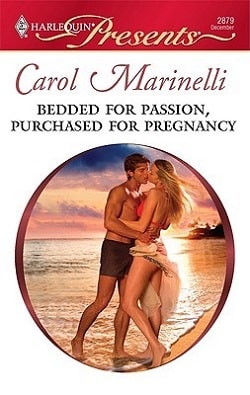We parked and walked across the original cobblestones and remnants of railroad tracks to Beth Proudfoot’s gallery. It was nearly four on a Sunday afternoon, but it was open. We stepped into a big, warm-smelling space with hardwood floors, high ceilings, and lots of light. A bell on the door tinkled. I could see a woman in the back-a flash of blond hair-helping a warmly dressed couple. We waited at a distance, grazing from a silver platter with cheeses and fruit, and milling around the sparse displays of what I presumed were artworks by Beth Proudfoot.
My art tastes were eclectic, and if I had money I could really be dangerous. I would add to my tiny collection of Acoma and Santa Clara Indian pottery, start collecting the major impressionists, sprinkle in a few of the postwar moderns, and indulge a taste for Edward Hopper that a recent case had reawakened in me. I didn’t know anything. I knew what I liked.
Beth’s art wouldn’t have worn well with me. A lot of wire, rope, and contractors’ flotsam glued to canvases, in crude wooden frames painted in bright primary colors. The frames were the highlight. Inside the frames, it was like high school vo-tech meets The Twilight Zone. But I was probably a philistine-cards on the wall announced that ownership of a Beth Proudfoot original began at $20,000. Any hope that her paintings illuminated what happened in Guadalupe twenty years ago, or what happened to Peralta a week ago, were beyond my critical skills.
After a few minutes, the couple left and the woman approached us.
“Welcome,” she said, fixing us full-on with one of those you-have-my-full-attention-and-I’m-delighted looks used by salesmen, politicians, and Junior Leaguers. She was tall and very slender, wearing one of those heavy, U-boat commander turtleneck sweaters and a short skirt, both in black. Still, she was shapely, and her movements suggested grace and agility. Her hair was two notches above the color of honey, natural-looking and cut in a rather severe page boy. For all that, the interest was in her face. She had good bones, as Grandmother would say. Atop those bones: no makeup, defiantly aging but still with flawless healthy skin, perfect mouth, and icy blue oval eyes topped by a thatch of vivid gold eyebrows.
“You look like you’re from out of town,” she said, holding out her arms as if to embrace us. “I can just tell. Now”-she looked me up and down-“you look learned, like you have a tremendous power flowing through you. I would say, you are a writer or an academician, definitely a man of letters.” To Lindsey, she said, “And you, with that very dark hair and fair skin and that dangerous intensity in your eyes, you must be an artist-leader of some kind.” I felt like we were being conned, but I was sure there were people who got this treatment and were happy to plink down twenty grand for some wire glued to canvas.
“Actually,” I said, “We’re looking for Beth Proudfoot or Marybeth Watson.”
“Maricopa County Sheriff’s Office,” the artist-leader said, displaying her identification and star.
The high-wattage smile blinked out like a suburban power outage, and something harder and self-aware crept into the woman’s face. I would have known that look anywhere. She was Marybeth, twenty years after Camelback Falls.
We didn’t waste much more time with pleasantries. “You people never give up, do you?” she said.
I hadn’t rehearsed anything. The answers we were after seemed so complicated. The questions we had were inadequate. I just talked. There had been a crime in Phoenix, I said, a shooting of the sheriff and murder of a former deputy. Both men had been on the scene more than two decades before in Guadalupe, when she had a different name and had been arrested after the killing of two cops. Both men had recently come back in contact with that old case.
“What does that mean to me?” she
said. “That was a long time ago. The court agreed I was not directly involved. I’ve had many lives since then. I’ve tried everything to put distance between that thing that happened and me.”
“Is that why you changed your name?” Lindsey said.
Her huge eyes blinked. She walked to the door and turned the lock. She turned the sign to “closed” and faced it to the street. She walked back to us, talking.
“My name is Beth Proudfoot. That is who I am. I am certainly not Marybeth Watson from Tulsa, Oklahoma. I haven’t even been to Phoenix for years. It’s a depressing place. No soul. The sun shines too much.”
“Does the name Peralta mean anything to you?” I asked, fishing. She shook her head, the cool blue eyes expressionless.
“Who is he?”
“He’s the sheriff. He was shot almost a week ago. We believe his assailant had something to do with the shooting in Guadalupe years ago.”
Lindsey said, “What about the name Dean Nixon?”
“No,” she said. Did she say it too fast? On TV the detective always knew those things. In real life, cops were lied to so much it was harder to pick out the really important lies.
I asked, “Tell us about that night in Guadalupe.”
Her head went back a bit, but she stayed calm. “I’ve been through that so many times. Didn’t you read my statement, Mr…Detective…whatever…”
“Mapstone,” I said. She didn’t remember me.
“That’s a Welsh name,” she said. “David Lloyd George was Welsh.”
“He was arguably a failed prime minister,” I said, shameless in my worthless book learning.
She stared at me like a fencer who has just removed the mask after a sharp exchange. “Maybe you really should be a man of letters,” she said.
“Guadalupe,” I prompted.
“We were stupid kids!” she said, her voice carrying back into the spacious room. “We were in the wrong place at the wrong time. It was terrible.”
“Why were you there?” Lindsey asked.















